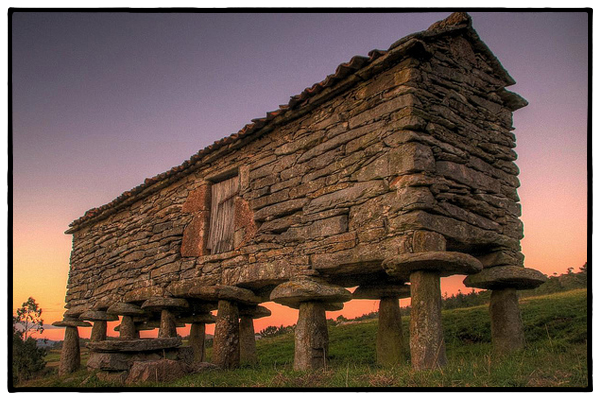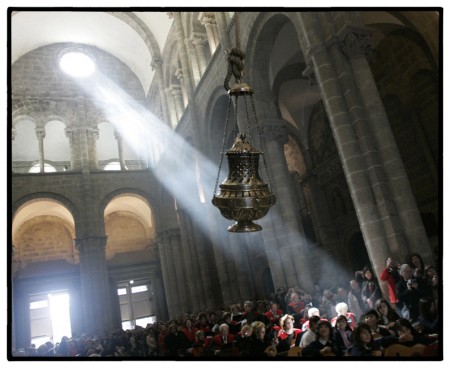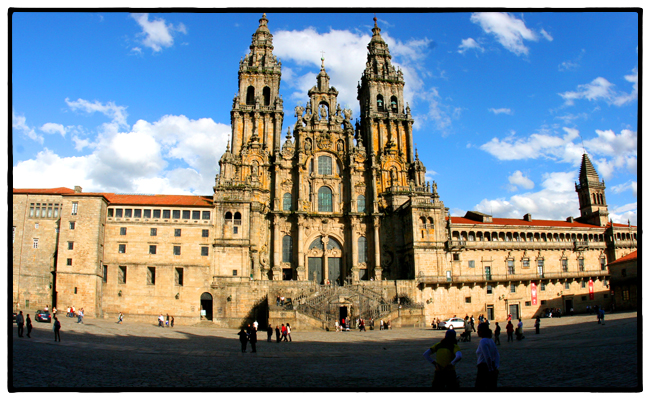San Simón is a Gallego mountain cheese and until recently was hard to find in restaurants and shops. This slightly smoked cheese is beautiful to look at, with the appearance of a polished brass knob. It looks like an artifact. Slice it horizontally, so it won’t dry out, and you find an interior that is dense and yellow with a creamy texture.
Cabrales is named for the Asturian town where it is produced. It is a blue cheese, cured in the cool, damp caves found in the nearby Picos de Europa mountains.
It is wrapped in maple leaves, giving its rind a slight ochre tint, which contrasts beautifully with the blue penicillium mold. Cabrales is very creamy, salty, and assertive. It coats the mouth when you eat it, giving you plenty of reason to drink more cider to prepare your palate for the next bite, and more cider. It is widely available in better restaurants all over the country.
Afuega’l Pitu is from the Asturian town of Oviedo. This is a valley cheese, and is salted. Sometimes the makers add a bit of paprika to it for variety. Before you buy you should ask first if it had paprika. At the very least, ask for a taste because it will be gladly given. For an Atlanctic cheese it’s a bit on the dry side, with a granular quality, and it sticks to the roof of your mouth. It has a nutty flavor and a long finish. This is a cheese you can really linger over.
 Tetilla (literally, nipple) from Galicia is so named because of its distinctive shape. One wonders if the original was in any way a representation of that of its maker. It is a quickly ripening cheese, full fat, and with a mild and sweet, not a salty, taste, Tetilla has a very creamy texture. It melts easily, which makes it good for cooking, if the Spanish were given to cooking with cheese. Perhaps they will be some day.
Tetilla (literally, nipple) from Galicia is so named because of its distinctive shape. One wonders if the original was in any way a representation of that of its maker. It is a quickly ripening cheese, full fat, and with a mild and sweet, not a salty, taste, Tetilla has a very creamy texture. It melts easily, which makes it good for cooking, if the Spanish were given to cooking with cheese. Perhaps they will be some day.
Ahumado de Aliva is from the area around Liebana in Cantabria and was originally made by shepherds during their stays in the highland pastures. This cheese is smoked over juniper wood, giving it a unique aroma. It reminds us of gin. Its taste is like butter, rather mild except for the smoke. A very good cheese with beer or white wine.









Recent Comments